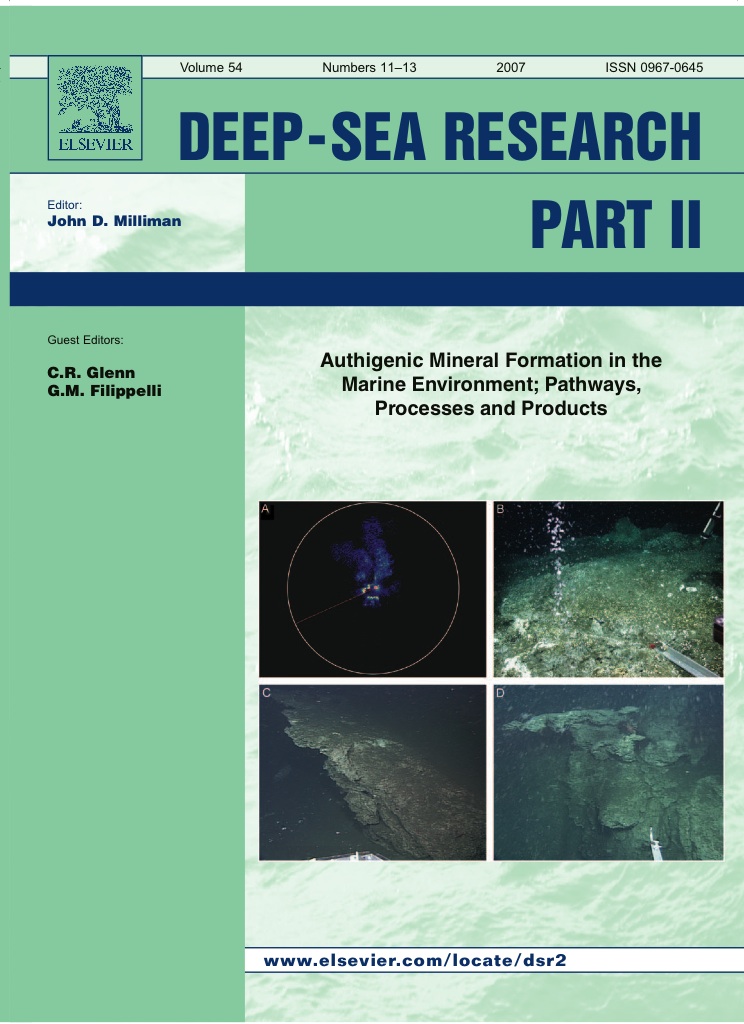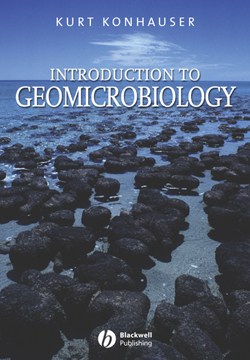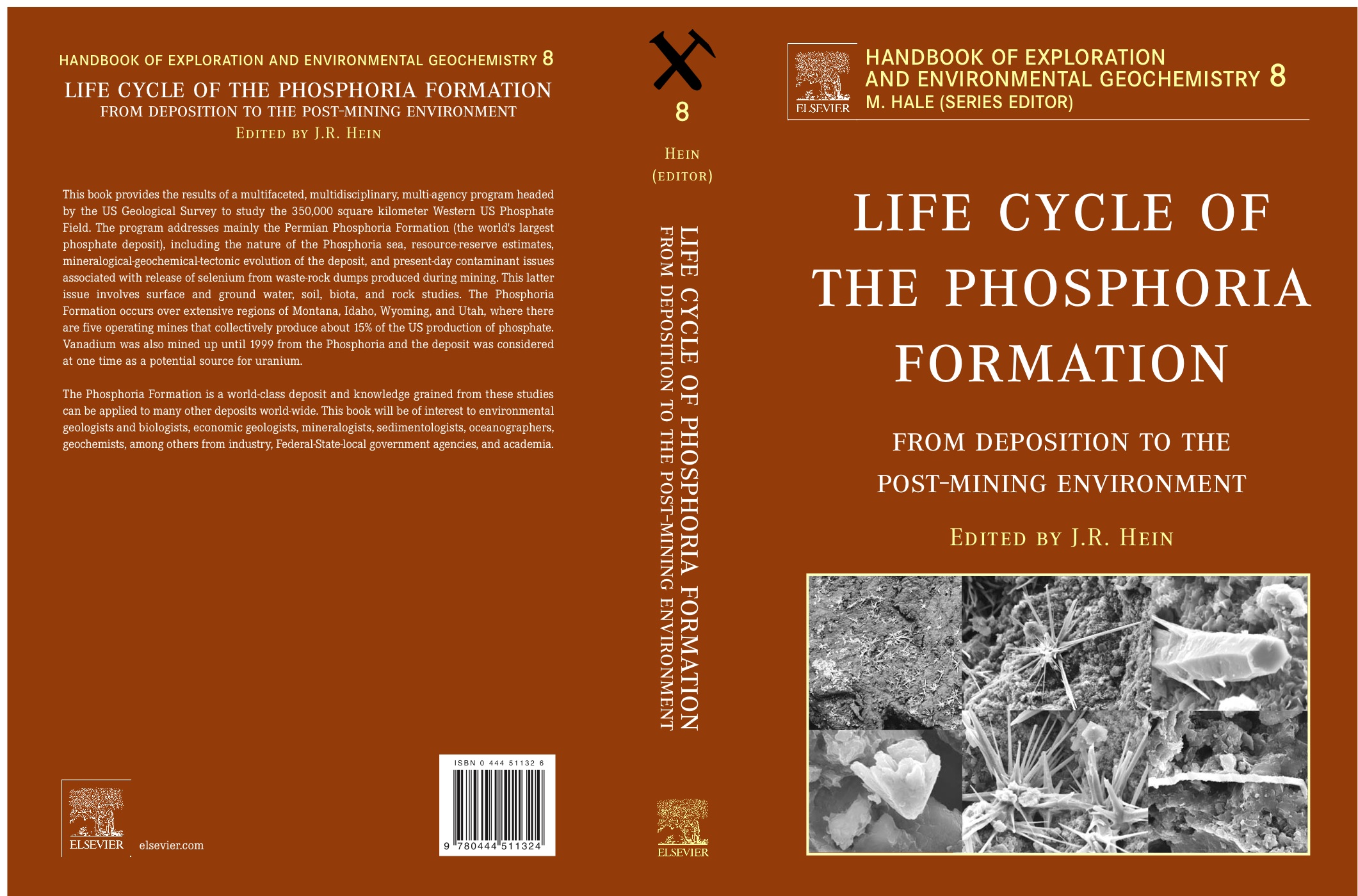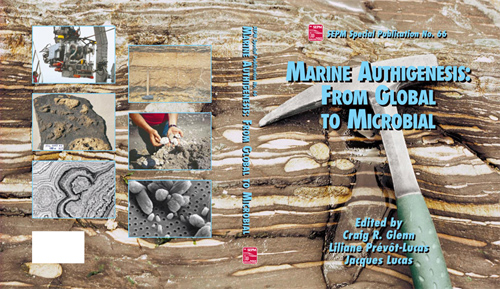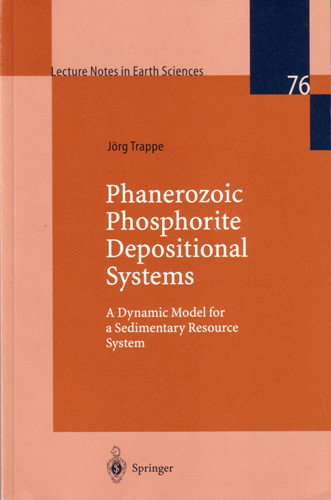DESCRIPTION
Authigenic minerals are those that form very early during a sediment's history. In this capacity, the processes of authigenesis have been increasingly utilized to understand the biogeochemical conditions in water columns and sediments, and to capture the biogeochemical state of paleoenvironments. This latter use has been central to our understanding of ocean history, and has propelled the push to define the processes, pathways, and products of authigenesis in the marine environment.
This thematic issue of Deep Sea Research II joins a time-punctuated series of volumes springing from different sources, and as such includes a number of contributions detailing the formational processes and paleoceanographic implications of authigenesis in carbonates, phosphates, and iron-rich minerals. This compilation differs from its precursors, however, in that it contains many contributions that focus on authigenic carbonates in methane-rich marine sediments. This emphasis reflects myriad new discoveries in this field over the past decade. The importance of the anaerobic oxidation of methaneanaerobic (AOM) as a key carbon source to authigenic carbonates is one of the recent findings that link a product of authigenesis to the processes and pathways of formation. More importantly, however, is that this process has significant economic and paleoclimatic importance, as methane-rich deposits and clathrates are a potential target for energy development, and the stability of these deposits (or rather lack thereof) has been linked to a number of processes of global import, including dissociation-driven collapse of margin sequences resulting in tsunamis and drastic and rapid changes in the global ocean/atmosphere carbon cycle and climate in the past, and perhaps the future.
The papers of this volume are organized thematically, beginning with several carbonate studies, followed by a series of methane-related studies in a host of marine environments, and ending with individual contributions in glauconites, marcasite, and phosphorites. Collectively, these contributions reveal a continued theme in the studies of authigenic minerals—the mineralogical targets of research may shift over time, but the goals of understanding the processes, pathways, and products of marine authigenesis for economic, paleoceanographic, and paleoclimatologic purposes remain steadfast.
CONTENTS
1. Authigenic mineral formation in the marine environment: Pathways, processes and products
Pages 1141-1146
Craig R. Glenn (glenn@soest.hawaii,.edu) and Gabriel M. Filippelli (gfilippe@iupui.edu)
2. Lithium contents and isotopic compositions of ferromanganese deposits from the global ocean
Pages 1147-1162
Lui-Heung Chan (glchan@lsu.edu) and James R. Hein
3. Controls on the delta13C of dissolved inorganic carbon in marine pore waters: An integrated case study of isotope exchange during syndepositional recrystallization of biogenic carbonate sediments (South Florida Platform, USA)
Pages 1163-1200
Lynn M. Walter (lmwalter@umich.edu), Timothy C.W. Ku, Karlis Muehlenbachs, William P. Patterson and Linda Bonnell
4. An authigenic calcite layer in the sediments of the Sea of Marmara—A geochemical marker horizon with paleoceanographic significance
Pages 1201-1215
T. Reichel (Thomas.Reichel@hydro.com) and P. Halbach
5. Pore water profiles and authigenic mineralization in shallow marine sediments above the methane-charged system on Umitaka Spur, Japan Sea
Pages 1216-1239
Glen T. Snyder (gsnyder@rice.edu), Akihiro Hiruta, Ryo Matsumoto, Gerald R. Dickens, Hitoshi Tomaru, Rika Takeuchi, Junko Komatsubara, Yasushi Ishida and Hua Yu
6. Authigenic carbon entombed in methane-soaked sediments from the northeastern transform margin of the Guaymas Basin, Gulf of California
Pages 1240-1267
Charles K. Paull (paull@mbari.org), William Ussler III, Edward T. Peltzer, Peter G. Brewer, Rendy Keaten, Patrick J. Mitts, Jeffrey W. Nealon, Jens Greinert, Juan-Carlos Herguera and M. Elena Perez
7. Authigenic carbonate formation at hydrocarbon seeps in continental margin sediments: A comparative study
Pages 1268-1291
Thomas H. Naehr (thomas.naehr@tamucc.edu), Peter Eichhubl, Victoria J. Orphan, Martin Hovland, Charles K. Paull, William Ussler III, Thomas D. Lorenson and H. Gary Greene
8. Nature and origin of diagenetic carbonate crusts and concretions from mud volcanoes and pockmarks of the Nile deep-sea fan (eastern Mediterranean Sea)
Pages 1292-1311
S. Gontharet (sglod@locean-ipsl.upmc.fr), C. Pierre, M.-M. Blanc-Valleron, J.M. Rouchy, Y. Fouqußet, G. Bayon, J.P. Foucher, J. Woodside and J. Mascle
9. Oxidation of detrital pyrite as a cause for Marcasite Formation in marine lag deposits from the Devonian of the eastern US
Pages 1312-1326
Juergen Schieber (jSchiebe@Indiana.edu)
10. Barite-forming environments along a rifted continental margin, Southern California Borderland
Pages 1327-1349
James R. Hein (jhein@usgs.gov), Robert A. Zierenberg, J. Barry Maynard and Mark D. Hannington
11. Paragenesis of the Morgan Creek Limestone, Late Cambrian, central Texas: Constraints on the formation of glauconite
Pages 1350-1363
Henry S. Chafetz (HChafetz@uh.edu)
12. Evolution patterns of glaucony maturity: A mineralogical and geochemical approach
Pages 1364-1374
Alessandro Amorosi (alessandro.amorosi@unibo.it), Irene Sammartino and Fabio Tateo
13. Oligocene to Holocene glauconite–phosphorite grains from the Head of the Cape Canyon on the western margin of South Africa
Pages 1375-1395
Rochelle Wigley and John S. Compton (john.compton@geology.uct.ac.za)
14. Rare-earth elements in the Permian Phosphoria Formation: Paleo proxies of ocean geochemistry
Pages 1396-1413
D.Z. Piper (dzpiper@usgs.gov), R.B. Perkins and H.D. Rowe
15. Geochemistry of rare earth elements in early-diagenetic miocene phosphatic concretions of Patagonia, Argentina: Phosphogenetic implications
Pages 1414-1432
A.M. Fazio (amfazio@gl.fcen.uba.ar), R.A. Scasso, L.N. Castro and S. Carey
Description
Geological, geoenvironmental, and resource studies were completed to study a world-class phosphate ore in the Western US Phosphate Field. This integrated, multi-agency, multidisciplinary research emphasized: (1) Geological and geochemical baseline characterization of the deposit and associated rocks, (2) Delineation, assessment, and spatial analysis of phosphate resources and lands disturbed by mining, (3) Contaminant residence, reaction pathways, and environmental fate associated with the occurrence, development, and use of phosphate rock, and (4) Depositional origin and evolution of the Phosphoria Formation and deposit and geoenvironmental modeling.
Contents
Preface.
List of Contributors.
Part I. Introduction.
1. The Permian Earth (J.R. Hein).
2. Evolution of thought concerning the origin of the Phosphoria Formation, Western US Phosphate Field (J.R. Hein, R.B. Perkins, B.R. McIntyre).
Part II. Regional Studies.
3. The history of production of the Western Phosphate Field (S.M. Jasinski, W.H. Lee, J.D. Causey).
4. The Meade Peak Member of the Phosphoria Formation: Temporal and spatial variations in sediment geochemistry (R.B. Perkins, D.Z. Piper).
5. Regional analysis of spiculite faunas in the Permian Phosphoria basin: Implication for paleoceanography (B.L. Murchey).
6. Strain distribution and structural evolution of the Meade plate, southeastern Idaho (J.G. Evans).
Part III. Geological and Geochemical Studies in southeast Idaho.
7. The effects of weathering on the mineralogy of the Phosphoria Formation, southeastern Idaho (A.C. Knudsen, M.E. Gunter).
8. Petrogenesis and mineralogic residence of selected elements in the Meade Peak Phosphatic Shale Member of the Permian Phosphoria Formation, southeast Idaho (R.I. Grauch, G.A. Desborough et al.).
9. Weathering of the Meade Peak Phosphatic Shale Member, Phosphoria Formation: Observations based on uranium and its decay products (R.A. Zielinski, J.R. Budahn et al.).
10. Mineral affinities and distribution of selenium and other trace elements in black shale and phosphorite of the Phosphoria Formation (R.B. Perkins, A.L. Foster).
Part IV. Geoenvironmental Studies.
11. The Phosphoria Formation: A model for forecasting global selenium sources to the environment (T.S. Presser, D.Z. Piper et al.).
12. Lithogeochemistry of the Meade Peak Phosphatic Shale Member of the Phosphoria Formation, southeast Idaho (J.R. Herring, R.I. Grauch).
13. Rock leachate geochemistry of the Meade Peak Phosphatic Shale Member of the Phosphoria Formation, southeast Idaho (J.R. Herring).
14. Rex Chert Member of the Permian Phosphoria Formation: Composition, with emphasis on elements of environmental concern (J.R. Hein, B.R. McIntyre et al.).
15. Gaseous selenium and other elements in near-surface atmospheric samples, southeast Idaho (P.J. Lamothe, J.R. Herring).
16. Selenium loading through the Blackfoot River watershed: Linking sources to ecosystems (T.S. Presser, M. Hardy et al.)
17. Selenium attenuation in a wetland formed from mine drainage in the Phosphoria Formation, southeast Idaho (L.L. Stillings, M.C. Amacher).
18. Selenium and other trace elements in water, sediment, aquatic plants, aquatic invertebrates, and fish from streams in SE Idaho near phosphate mining (S.J. Hamilton, K.J. Buhl, P.J. Lamothe).
19. Uptake of selenium and other contaminant elements into plants and implications for grazing animals in southeast Idaho (C.L. Mackowiak, M.C. Amacher et al.).
Part V. Modeling Studies.
20. Review of world sedimentary phosphate deposits and occurrences (G.J. Orris, C.B. Chernoff). Check the USGS Open-File Report OF02-156A,B http://geopubs.wr.usgs.gov/open-file/of02-156/
21. Western Phosphate Field - Depositional and economic deposit models (P.R. Moyle, D.Z. Piper).
22. Societal relevance, processing, and material flow of western phosphate - Refreshments, fertilizer, and weed killer (S.M. Jasinski).
Appendix CD: Table of world sedimentary phosphate deposits (with appendices for chapters 12, 13, 18, and 19) (G.J. Orris, C.B. Chernoff).
Authors Index.
Subject Index.
